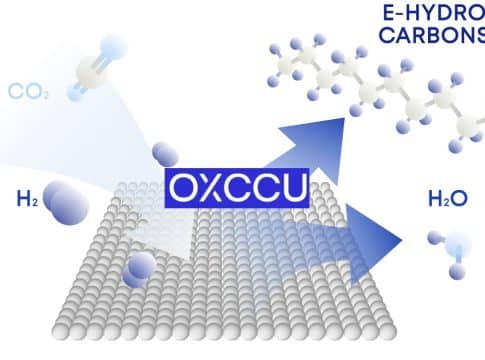Oxford University Spinoff Reveals Synthetic Fuel Plant That Could Revolutionize Aviation
Oxford University spin-off OXCCU has announced a groundbreaking development in the aviation fuel sector: the launch of the world’s first hydrogen-to-synthetic aviation fuel demonstration plant.
Scheduled to commence operations next month at Oxford Airport in England, this innovative project marks a significant step toward achieving more sustainable aviation fuel (SAF) solutions.
What is SAF?
SAF is a liquid fuel for commercial aviation that can cut carbon dioxide emissions by up to 80%. It can be produced from various feedstocks, including waste oils, fats, green and municipal waste, and non-food crops. Below is the state of SAF as of 2023.
Infographics from IATA website
Alternatively, SAF can be synthesized by capturing carbon directly from the air. The term “sustainable” refers to its production process, which avoids competing with food crops, water resources, or causing deforestation.
Unlike fossil fuels, which release carbon that has been sequestered for millions of years, SAF recycles CO2 absorbed by biomass during its growth, thus reducing the overall carbon footprint. This is what the UK-based startup OXCCU is focusing on.
From Air to Aircraft: The Innovation Behind OXCCU’s Synthetic Fuel
Backed by notable investors, including Saudi Aramco, United Airlines, and energy trader Trafigura, the OX1 plant will demonstrate a novel technology designed to convert hydrogen and carbon dioxide directly into long-chain hydrocarbons. This process uses an advanced iron-based catalyst and reactor design to achieve high conversion efficiency and selectivity, creating a cost-effective and scalable solution for producing aviation fuel.
Traditionally, producing aviation fuel from CO2 and H2 requires multiple steps. It involves CO2 first converted into carbon monoxide (CO) before being turned into hydrocarbons.
OXCCU’s new approach bypasses this intermediate step, significantly reducing energy consumption and overall costs.
OXCCU One-Step Process for SAF
Image from OXCCU website
The one-step, direct conversion process not only streamlines production but also minimizes the formation of unwanted byproducts, making it a more environmentally friendly option.
The OX1 demonstration plant is set to produce about 1 kilogram (1.2 liters) of synthetic aviation fuel daily. While this initial output is modest, it represents a crucial proof of concept for OXCCU’s technology.
The company has announced plans for a larger facility, the OX2 plant, which will be in northeast England. Expected to begin operations in 2026, OX2 aims to produce 160 kilograms (200 liters) of synthetic fuel per day.
These advancements lay the groundwork for future commercial-scale plants that will further develop and supply power-to-liquid (PtL) fuels.
In June of the previous year, OXCCU secured £18 million ($23 million) in Series A funding. Various investors supported this round, including Italian oil firm Eni and several venture capital firms.
RELATED: Google Signs Up Shell’s SAF Program to Cut Business Travel Emissions
Could This be The New Era for Aviation?
Despite the excitement surrounding the OX1 plant, OXCCU has yet to disclose whether the hydrogen used in the pilot will be produced from renewable sources or its specific origin. The successful demonstration and scale-up of this technology are crucial for the future of sustainable aviation fuel.
According to CEO Andrew Symes, the key to achieving widespread adoption of PtL sustainable aviation fuel is making it cost-effective. He particularly said that:
“The single-step fuel we’ve developed in the lab has generated significant excitement due to its potential to dramatically reduce SAF costs. Scaling up is crucial, and this plant will provide the necessary data and fuel production.”
The OX1 plant will provide essential data and fuel volumes needed to validate the technology’s potential and pave the way for future commercialization.
The launch of the OX1 plant is a pivotal moment for the carbon removal and sustainable aviation fuel sectors.
According to the International Air Transport Association (IATA), SAF would be crucial in achieving net zero CO2 emissions for aviation by 2050, potentially accounting for around 65% of the necessary emissions reductions. To meet this target, a ramp-up in SAF production is necessary, with the most substantial growth anticipated during the 2030s.
Chart from IATA website
This surge is expected as global policies become more supportive, SAF achieves cost parity with fossil kerosene, and credible carbon offsets become scarcer.
As the world seeks to address climate change and reduce emissions, innovative solutions like OXCCU’s fuel process are essential. By demonstrating the feasibility of this technology, OXCCU is setting the stage for broader adoption of sustainable aviation fuels.
READ MORE: Turning CO2 Into SAF Via “Industrial Photosynthesis”
The post Oxford University Spinoff Reveals Synthetic Fuel Plant That Could Revolutionize Aviation appeared first on Carbon Credits.



